Pipes by Larry Roush
I was thrilled when I learned that Roush was returning to the world of pipe making. I was always a big fan of his work, and though I won't go so far as to say that his early retirement was a devastating blow to my world, it was a great disappointment. How could someone with so much talent "retire?" How could he abandon his fans, leaving us with a only finite number of pipes to trade amongst ourselves? And, the trading was difficult. Once someone gets their hands on a Roush pipe, they usually don't let go without a fight. (I'm reminded of the old joke about the three antique dealers who were shipwrecked on a tropical isle. Only a single vintage armoire was intact, but they each made a killing...)
Since buying my first new Roush (read my full review), Larry and I have become good friends, which only makes his pipes more special to me. Still, I can objectively say that the way these pipes smoke is as good as it gets, and the workmanship is remarkable. I love his rustication, and his silver work is truly beautiful, and perfectly integrated with the design of each pipe. Larry's attention to detail is like that of a fine watchmaker, and he's constantly striving to achieving perfection. (See the evolution of a pipe from roughed out bowl and parts to the finished product.) I don't see how they could get much better, but don't tell Larry that. We have to keep him working at it. Learn more about Roush pipes by visiting Larry's own web site.
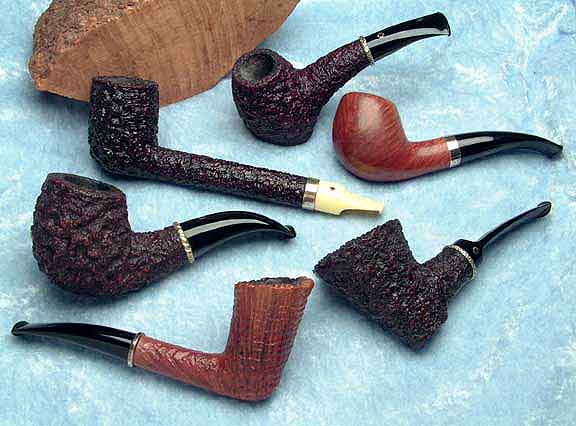
Pictured above (clockwise from upper left) are a LONG shank lovat, the original pokerhawk, an early smooth piece (#45), an amazing dublin variation, one of very few early sandblasts (#57), and my first NEW Roush, a big bent apple, (#407).

Here are my original sketches for the pipe that became Larry's straight rhodesian, which can be seen in the next photo.
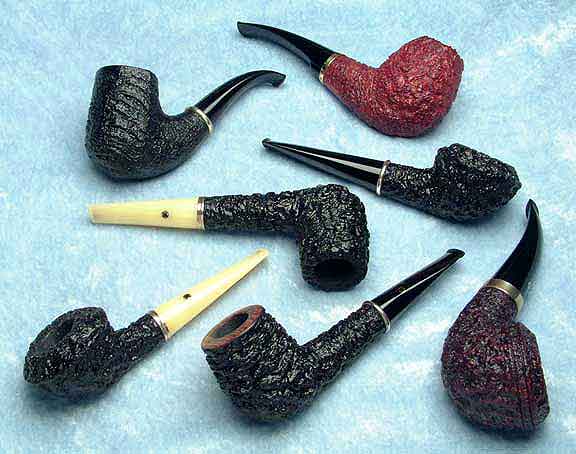
Pictured above are a recent sandblast full bent, a wonderful gold-banded 1/8 bent apple, a pair of straight rhodesians, a bent rhodesian, and a pair of billiards. The antique bakelite stems are beautiful, comfortable, and unique. The smooth top on the bottom billiard is stunning.
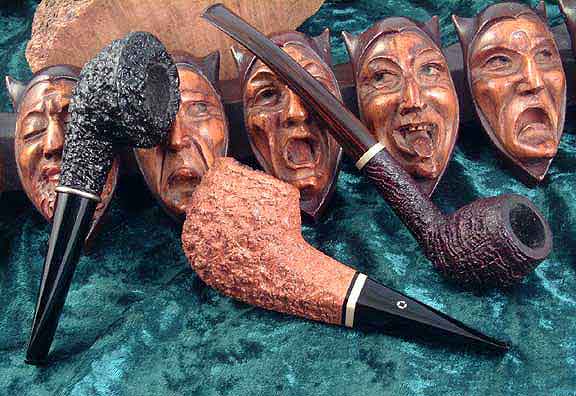
Another photo of three of the pipes shown above. These are #444, #666 and #777. Too bad I missed out on #555, and the rest, but I do have dibs on #888! The pipe on the left is #666, nicknamed “The Beast.” Where's the stem logo? I guess something was possessing Larry when he made the pipe, because it is on the bottom of the stem. Somehow, this antique pipe rack seemd an appropriate background...
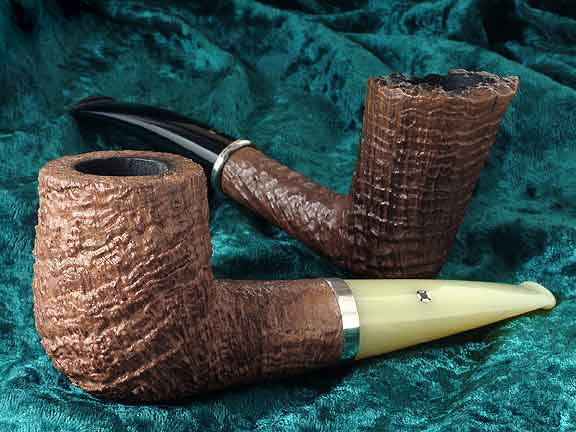
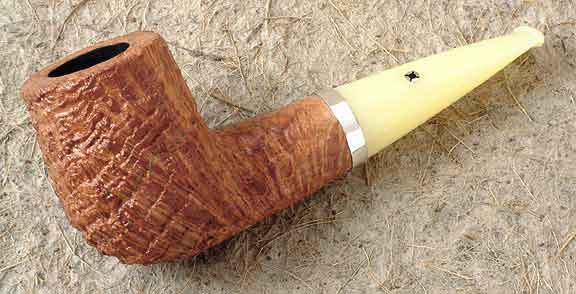
Roush blasts, old and new. Here, shown with #57 (background) is #888, a fantastic, chubby, stubby billiard, with bakelite stem, in Larry's Bella Cera finish. This is a craggy, yet detailed sandblast - a delight to look at, and a tactile treat! The finish has darkened noticeably after smoking only a few bowls, so I've pictured it unsmoked as well. I'm sure there will be another Roush in my future before #999, but, you guessed it; I've got dibs on that one, too.

By a great stroke of fortune, I was able to track down and acquire #555. Unfortunately, its original owner wanted it back, so it's no longer in my collection.
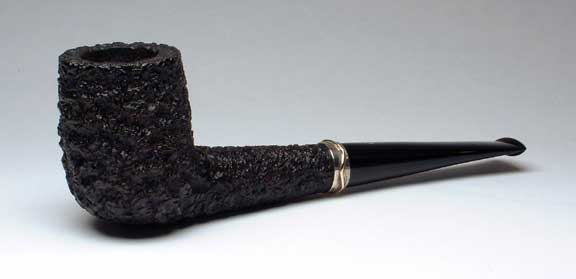
Here's a fantastic large billiard, #437. This pipe was offered to me at the CORPS show in Richmond by a friend who knew I'd like it. He was right. I filled it that night with the special blend I did for the show, and enjoyed about 2 hours of smoking bliss. The pipe is 7“ long, with a tobacco chamber nearing 1” in diameter. The silver band has a wavy gold application that really sets it off. What a pipe!
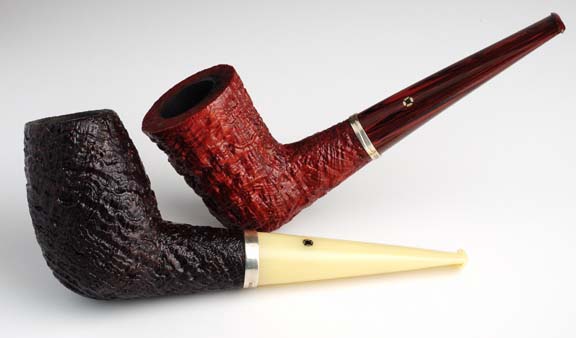
Finally, here are pictures of #999, a beautiful example of the “Short Belge I designed for Larry, and #1111, a tall dublin with Larry's special rusticated and blasted finish. I'm going to have to wait a very long time for #2222 to come along, but I'm guessing it's going to be well worth the wait.

The ”back of envelope“ (literally) original sketch of the Belge design. This was inspired by, and quite loosely based on an old Comoy Grand Slam shape, no longer in my collection. That pipe was a sort of cross between a stack and a true Belge, and is the only one of its type I've seen to date. I wouldn't describe my design as a classical Belge. It is rather a new shape that presents some of the Belge's design cues, moving them in a direction more suited to Roush's unique approach to shape.
